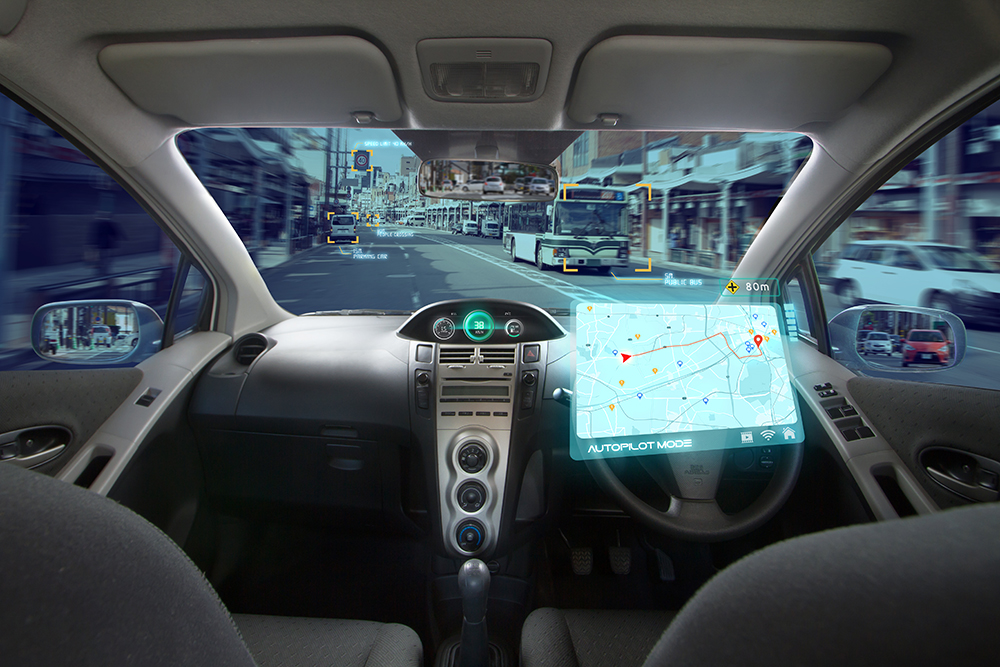
The biggest word I learnt during my PhD was ‘anthropomorphising’. It means attributing human characteristics or behaviours to an animal or object. My PhD (30 years ago now) was about using artificial intelligence (neural networks) to model driver behaviour.
Turns out I was ahead of the curve on driverless cars, I just didn’t know it. I ended up in this PhD topic for two reasons: (i) I was a computer geek in my teens in the ‘80s, writing and playing games on my ZX81 and ZX Spectrum; and (ii) I started falling in love with transport during my undergraduate degree in civil engineering.
With regard to the latter, it was the module on traffic management that did it. I found it fascinating how a formula had been developed to determine the phasing on traffic lights to optimise the throughput of vehicles at a junction. These were my kind of problems, I was up for more.

Before I knew it, I was spending my postdoctoral years in a group renowned internationally for its research into Intelligent Transport Systems (the Transportation Research Group at the University of Southampton in the UK – I owe so much in my career to what I learnt from its Director at the time, Professor Mike McDonald).
Fast forward to the me of today and I’m the Mott MacDonald Professor of Future Mobility at UWE Bristol. It’s important to note that I’m not Professor of Smart Mobility or Professor of Intelligent Transport. This was a conscious choice because along the way I’ve never forgotten the criticism from that reviewer of the draft journal paper from my PhD – criticism that I was guilty of anthropomorphising as I referred in the article to my artificial neural network models as if they had human qualities.
Wicked problems
Don’t get me wrong, I haven’t lost touch with my engineering and technology roots. In fact, I’ve made a career out of addressing the collision and merging of the digital age and motor age. However, what I have come to realise is that the bigger picture of our sector has problems way beyond that complex but soluble problem of optimising traffic signals which drew me into transport as an undergraduate.
The problems I’m referring to are known as wicked problems. They are problems characterised by: (i) a divergence of perspectives and values people hold about the problem itself; (ii) a lack of evidence about the problem; and (iii) being intertwined with other complex or wicked problems.
Let me give you an example: driverless cars (or self-driving cars for the purists among us). There are two very different questions we can ask. The first is “How can we make a driverless car that ‘works’ and doesn’t kill people?”. That’s a complex problem. Not easy to solve but a matter of inventive flair and enough funding in charting a course to a solution.
The second question is “Will driverless cars help address climate change, social inclusion, liveable cities and improved public health; and if so how?”. That’s a wicked problem (linked to multiple other wicked problems). Impossible to even attempt to answer without a litany of ‘it depends’ qualifications relating to how the invention of a driverless car becomes an innovation – something that is adopted by, and which then shapes, society.
This is the professional world I now inhabit. I’m concerned with how we try and manage the slew of wicked problems in the transport sector – problems that exist within a world that is in a state of considerable flux which has given rise, for many of us, to a sense of deep uncertainty about what the future has in store. Oh, how I sometimes long to be back in the world of bounded, soluble problems like optimising signal timings at a junction. Don’t misunderstand me, we still very much need those soluble problems to be solved. But they are often the tip of the iceberg when it comes to determining whether we are making transport ‘better’.
Climate change
Years ago I wrote an article called “From Advanced to Effective Traveller Information Systems”. ‘Advanced’ is in the same cadre of terms as ‘intelligent’ and ‘smart’ for me. To be truly advanced or smart, solutions surely have to deliver outcomes that are good for society – they have to be effective. And perhaps the most wicked problem of all is how we address climate change. If we are not effective in managing that problem then all bets are off regarding what ‘intelligent’ transport inventions might have delivered for society. There will be no driverless cars on a dead planet; unless the rise of the machines is imminent, which I doubt.
One of the reasons addressing climate change is a wicked problem is because of the globalised system of systems we now inhabit within which there are multiple vested interests at play. And can there be many more powerful vested interests that drive behaviours throughout society than profit and power? Think about it for a moment. Private sector companies are expected to make a return on investment for the venture capitalists and shareholders behind them. They need to produce products or services that the public wish to consume. Profit drives marketing which is used to shape lifestyle aspirations of consumers to want the products or services on offer. Consumers who are then signed up to those lifestyles are also voters. Voters matter to politicians and politicians matter to private sector companies – power and profit.
Public authorities looking to try and shape a better future for their citizens have their behaviours governed by their elected members. The work they procure from consultants and academics is indirectly influenced by power and profit. While consultants may wish to play a part in shaping a better future, they are beholden to turning a profit and giving their public sector client what they want (even if they should really try to give them what they need, which may be different). You start to see how hard it becomes to pursue future mobility that is smart enough to be sustainable (and not just profitable).
Manifest influences
This interplay of influences between actors is manifest in the world of ITS. Gartner (a technological research and consulting firm in the US) came up with a wonderful model that depicts how so many new and exciting inventive ideas play out. You may have heard of it, but if not I encourage you to read more on it: Gartner’s Hype Cycle.
From initial obscurity, an idea or possibility captures the media’s interest. Think driverless cars (we’re still waiting for the revolution), Mobility as a Service (why are private cars still a thing in cities?), 3D printing (you mean you don’t print your clothes at home?), machine learning (why hasn’t one passed the Turing Test yet?), flying taxis (oh, p-lease).

We read stories and tweets about how transformational these new inventions are set to be. The buzz around them reaches what is know as the ‘peak of inflated expectations’. Beyond this, media interest dies down as tests and trials start to reveal just how challenging it is to deliver what the hype had suggested. Visibility of the idea subsides downwards to what is called the ‘trough of disillusionment’. Some ideas stay there and die. Others continue their journey onwards, overcoming obstacles and, albeit in perhaps a more muted way than first anticipated, ascend up the ‘slope of enlightenment’ to the ‘plateau of productivity’ where they have entered into society – from invention to innovation.
It really becomes quite amusing if not infuriating to see how politicians are ‘seduced by the siren sound of technology’ when the peak of inflated expectation is being reached. Equally, investors can get greedy at this stage, seeing revolution just around the corner and wanting to profit from it.
‘Pump and dump’
I learnt of a lovely Silicon Valley notion which is called ‘pump and dump’. The hype surrounding a new phenomenon draws investors in like moths to a lamp. The expectation of huge future profits inflates market valuation of the company or companies pushing forward the phenomenon. Having ‘pumped’ the phenomenon, the smart investors sell their stock while the share price is high knowing the hype will soon give way to reality. The ‘dumped’ stock is gobbled up by less shrewd investors who then watch the share price tumble. Pump and dump! I mean, who cares if the hyped idea ever becomes a reality if you can turn a profit along the way?

Well, thank you for still being with me as I draw this piece to a close now. I’ve tried to share some of my personal learning journey during my professional career, associated with the world of ITS. I still get excited by the art of the technologically possible. Though I have to say that the last 30 years has shown me that much more transformational change has happened in the digital age than the motor age – just look at how we have been living our lives through our device screens rather than windscreens during the pandemic. My closing message is to be on your guard – don’t bandy about terms like smart, intelligent or advanced unless you can argue with conviction that they are set to play their part in shaping a ‘wicked’ world for the better. And good luck to us all in that endeavour.
About the Author:
Glenn Lyons is Mott MacDonald Professor of Future Mobility, UWE Bristol, UK





